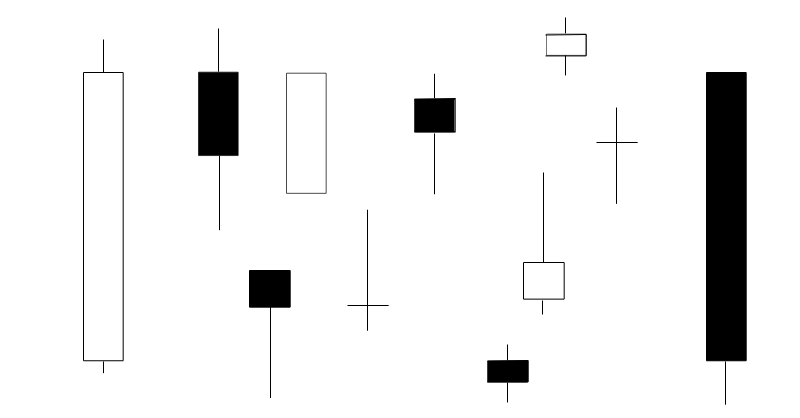This post will cover the bullish engulfing pattern and the bearish engulfing pattern that forms part of the many candlestick patterns out there that is used in trading. The engulfing pattern is a very popular candlestick pattern and in my opinion all traders should at least know about it. Before I start, if you are new to candlesticks and want an introduction, you can start here.
The Engulfing Candlestick Pattern:
Note: For this post all white candles used in pictures / figures will mean the candle closed up / positive / bullish (the close of the candle is above the open for the given period) and black candles will mean it closed down / negative / bearish (the close of the candle is below the open for the given period).
The engulfing pattern is a reversal pattern that consists of two candles of opposite color. Because it is a reversal pattern, the bullish engulfing candle comes after a down move in a market and the bearish engulfing candle comes after a market moved up.
With the bullish engulfing pattern, the first candle is black (as part of the down move in the market) and the second candle’s body is white (bullish) which engulfs the whole of the first candle’s black body. With the bearish engulfing candle, the first candle is white (as part of the up move in the market) and the second candle’s body is black (bearish) which engulfs the whole of the first candle’s white body.
See picture below:

A little more context:
As I said before, the engulfing pattern is a reversal pattern, which means that the bullish engulfing pattern will form after a falling market and the bearish engulfing candle will form after a market that moved higher as shown in the pictures below.


Finally:
These patterns can’t be traded blindly whenever they show up on a chart, but should be traded in context of the market. The engulfing pattern’s odds of working increases when the first candle is small and the second candle big in terms of their real bodies. Odds also increase when the engulfing pattern is traded in conjunction with other factors such as support and resistance, for example.
I hope you found this post useful. Thanks so much for reading.
Thanks and Regards,
Trading SOS SOS
